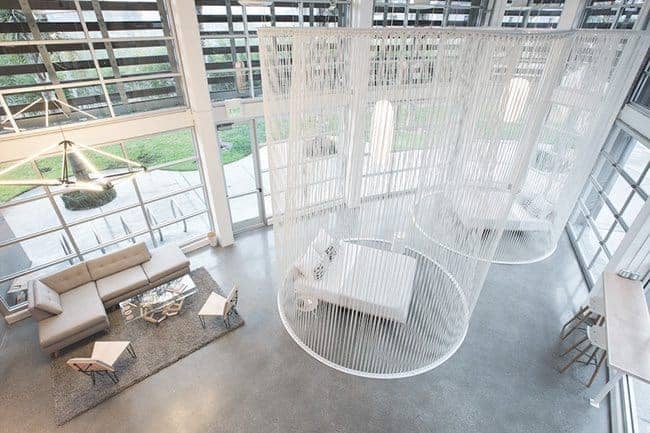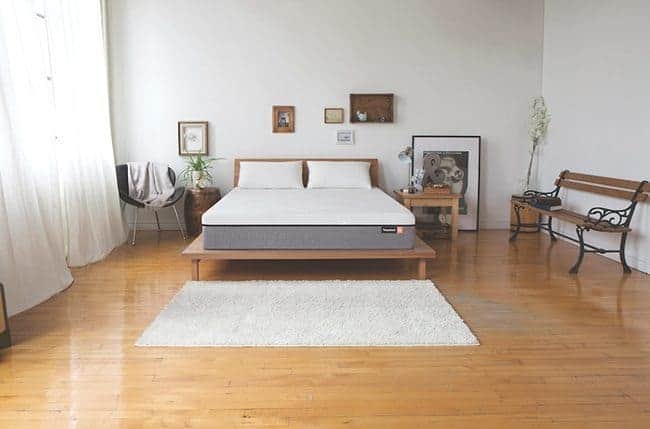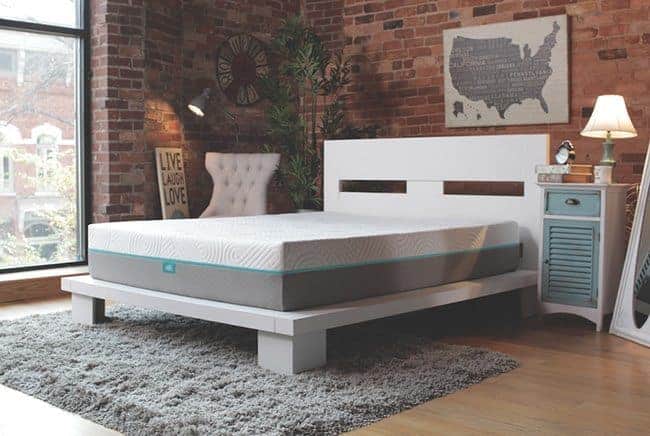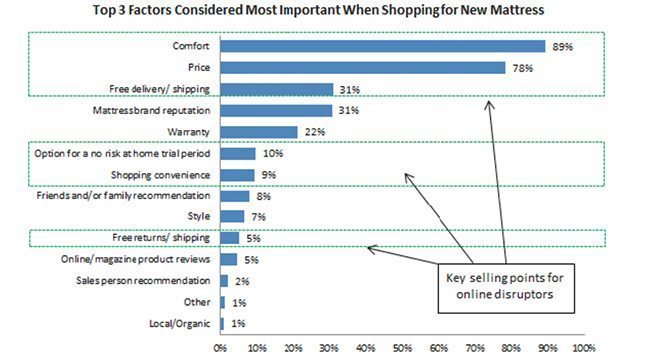By now, everyone in the mattress industry is familiar with Casper, which launched in 2014 as an online-only bed brand selling a single-comfort mattress.
The fledgling New York-based company put in place a carefully crafted digital marketing strategy and emerged on the scene with plenty of venture capital, celebrity endorsers and hype. This month, we explore a cross-section of companies operating exclusively or primarily online—each touting what it believes to be unique brand features and marketing strategies, many of which were inspired by Casper’s quick success.
Depending on whom you speak with—and the part of the world you’re referring to—the number of new players is anywhere from 70 to 100, with more coming online each month. This is not just a U.S. phenomenon; In the English-speaking world alone, BedTimes has spotted new e-commerce-only brands in Australia, Canada and the United Kingdom.
According to Brad Thomas, an equity research analyst with KeyBanc Capital Markets, the corporate and investment banking arm of KeyBank, a Cleveland-based financial services company, the U.S. market share for e-commerce mattress brands will grow to 5% this year, or $755 million in sales. That’s up from a 2% share, or $300 million, in 2015. In a June report titled “The Emerging E-Commerce Threat,” Thomas sums up key factors driving the growth: “First, a long trail of market entrants with more than 50 competitors has emerged (and potentially as many as 100). Several of these newer entrants (like Purple, for example) are seeing rapid growth and meaningful revenues out of the gate.

This summer, Casper’s Napmobile is visiting 15 cities in the United States and Canada. Equipped with four sleeping pods, it gives consumers the chance to experience the New York-based company’s mattress, sheets and pillow.
“Second, we are seeing online demographics that are wider reaching than just millennials. In fact, within the mattress-review websites, we have heard data points suggesting only one-third of traffic has been coming from millennials. Lastly, newer emerging brands are coming at a wider price range, with several at higher, premium $1,000-plus price points that are gaining traction.”
In addition to luxury price points, new brands are attempting to fill other niches. For instance, some offer latex-only beds, while others tout customizable comfort. Still others are springing coils—in the core or cushion—on consumers.
These online brands are turning up the heat on the marketing front, hiring top-notch e-commerce experts to help them enhance their social media, review site and advertising presence; experimenting with other forms of promotion; and opening pop-up stores, mobile sleep shops and even more traditional brick-and-mortar stores. Some brands have added a social-giving component to their businesses.
Tuft & Needle: Putting feedback to work
Online merchants’ ability to capture and analyze data is proving to be a cornerstone of their success. Tuft & Needle “collects a mountain of data” about its customers through both reviews and surveys, “and we examine every single piece of that data to better understand the customers’ experience and inform future product iterations,” says Evan Maridou, chief people officer for the Phoenix-based company.

A view of Tuft & Needle’s new San Francisco showroom. The company has a second location where consumers can try its mattresses at its headquarters in Phoenix.
“Our mattress was created and perfected through careful attention to sleeper feedback,” Maridou says. “Since our launch in 2012, our team has been steadily improving our product and our service to enhance our ability to meet customer needs.”
One metric Tuft & Needle particularly values is its Net Promoter Score. The NPS is a survey-based system that asks purchasers of a particular product or service, “How likely are you to recommend this company to a friend?”, as well as the key factors that led to the ranking. To date, Tuft & Needle has drawn 50,000 responses to that survey. Its current ranking of 82 places it ahead of major brands such as Apple, Costco and Jet Blue. “We dig into all the negative and positive reviews we get for fresh insights,” Maridou says.
Tuft & Needle applies the same focus to product development. The company has made more than 100 revisions to its mattress since its launch, constantly fine-tuning the design.
“We started with a 5-inch thick mattress, but after conducting a number of side-by-side tests, evolved our line to focus on a single 10-inch model in six sizes,” Maridou says. “The current model features our proprietary T&N Adaptive Foam, paired with a high-quality support layer. The T&N Adaptive Foam has unique properties that enable it to conform to a wide variety of different bodies.”
Of course, no single mattress works for everyone. “But instead of making lots of different models to serve various niches, our team spends its time trying to perfect our one product so that it provides the optimal level of comfort and support for the largest group of people possible,” Maridou says. “Our low rate of returns shows that we’re hitting the mark.”
The follow-up surveys Tuft & Needle conducts one year after purchase also show high levels of satisfaction. “Our scores after a year are even higher than in surveys taken right after the sale,” Maridou says.
In addition to gathering online feedback, Tuft & Needle collects valuable input in-person from consumers. In January, the company opened a 1,500-square-foot flagship showroom in San Francisco. The company has a second showroom in Phoenix at its headquarters. Designed to give consumers the opportunity to more deeply connect with the brand, Tuft & Needle’s brick-and-mortar locations feature comfortable, semi-private rooms for testing its mattress. Neither location carries any inventory—products are delivered via FedEx, just like those bought online. The showrooms are staffed by noncommissioned, customer experience representatives with a no-pressure approach.
“Some customers still want the opportunity to try a mattress before they order,” Maridou says. “By having these stores, we get to learn more about in-store retail and develop a different type of relationship with our customers. It’s too early to know whether we’ll open more stores or whether this will remain a small experiment.” In the meantime, the locations provide an effective platform for testing product innovations, including a new pillow line Tuft & Needle rolled out in the spring.
“What we do know is that, because of our 100-day, no-risk trial, most customers are quite happy to buy online without visiting a store,” Maridou says. “They recognize that we’re offering an exceptional product at a very fair price, with minimal hassle, and we’ll support them at every stage of their purchase journey.”
Yogabed: Expanding reach
Yogabed, an online retailer of luxury sleep products launched by bedding industry veterans Tim Oakhill and Chris Marsh in early 2015, has taken several major steps this year to strengthen its market position. The first came in February, when the Atlanta-based company added a distribution and fulfillment center in the St. Louis suburbs. The facility, located within one to two days of the majority of Yogabed’s customers, also houses a call center, bringing 100% of the company’s customer service activities in-house.

The 10-inch Yogabed luxury gel foam mattress includes two pillows and a removable Zip-n-Wash cover. Yogabed is based in Atlanta.
“We work hard to provide shoppers with the information they need to make an informed decision,” says Oakhill, who formerly served as executive vice president of brand management for Mattress Firm and chief marketing officer for Simmons. “If they have questions or concerns, either before or after the sale, our customer service reps can provide the answers.” To help consumers better navigate the sea of choices that exist among online mattresses, customer service reps have access to actual product from its competitors so they can make comparisons based on their own hands-on experience.
In addition to enhancing customer service, Yogabed’s new distribution center has enabled the company to expand its product assortment. In March, it introduced three sleep accessories—an all-in-one frame/foundation, luxury sheet sets and a waterproof mattress protector. The company also offers its own pillows, a set of which are provided free with every mattress purchase.
“With the addition of our new frame, sheets and protector, we’re making it even easier for consumers to get everything they need for their bedroom at one place and at an incredible price,” says Marsh, who formerly served as vice president of merchandising for Mattress Firm. “We know that 38% of people who are buying a mattress online are buying a foundation within six months, but until now there has been little opportunity to buy a foundation online. We’ve positioned ourselves as a one-stop shop for luxury sleep.”
The core product in Yogabed’s lineup remains the Yogabed Mattress, a single model in six sizes. Priced at $874 for a queen size, the 10-inch gel foam mattress features four layers, including a top surface of proprietary Instant Response Foam and a Zip-n-Wash cover. Each sale is backed by a risk-free, money-back trial, which Yogabed recently extended from its initial guarantee of 101 nights to a full year.
“Our ability to offer this longer money-back guarantee—the most generous return policy in the market—reflects the deep confidence we have in our brand,” Oakhill says. “With more than a year-and-a-half of sales experience, we now know what our metrics look like, and they tell us our returns are extremely low.”
Inspired by the wellness benefits of yoga, the Yogabed’s advanced layering system meets the support and comfort needs of more than 95% of sleepers, according to Marsh. “One size does indeed fit all, if it’s designed right.”
If, after sleeping on a Yogabed for at least 30 nights, a consumer still is not satisfied, the company will send out a topper (if the bed is considered to be too firm) or arrange for a product return or refund. Like most e-commerce sources, Yogabed either donates returned beds to a local charity or takes them to a recycler.
With a one-stop shopping selection in place and a new distribution facility up and running, Yogabed’s next priority is further brand development. The company already has a high profile online, having benefitted from an early wave of news coverage by Bloomberg, The Wall Street Journal, The Washington Post and The Huffington Post, and online reviews by popular design sites such as Design Milk. But it recognizes that maintaining such a profile with the public requires a constant stream of skillful social media messaging, keyword search placements and banner ads across a variety of digital platforms. Yogabed has both an inside team and an outside consultant to help manage digital marketing initiatives.
“There’s no single bullet that’s going to get you noticed,” Oakhill says. “Our media mix changes all the time. A hot property one month will be replaced by something completely different a month later. You have to constantly stay on top of the latest developments so that you get the most impact for your ad dollars. The goal is to reach consumers at a point of time when they are looking for a mattress and ready to buy.”
The immediacy of the internet and the ongoing communication with consumers that it fosters are both a challenge and an opportunity. “It requires a lot of focus and effort to stay on top of all the queries, reviews and messages that are posted via social media and our website, but the payoff is huge,” Oakhill says. Instead of taking months to research a change in merchandising or pricing, he says, “we can get valuable feedback from our customers right away. And the data we’re collecting on shopping activity provides important insights that help shape the direction of new programs.”
Novosbed: Returns, solved
Product innovation is key, says Sam Prochazka, president of Novosbed, an early mover who entered the boxed-bed market in 2009.
In February, Novosbed introduced a patent-pending Comfort+ kit that allows customers to adjust the firmness of their mattress after purchase. “It is the first product of its kind for a memory foam mattress—online or offline,” says Prochazka, whose company is based in Edmonton, Alberta.

To provide a way for consumers to adjust the firmness level of a mattress after purchase, Novosbed offers a free Comfort+ insert for the bed’s top layer. Novosbed is based in Edmonton, Alberta.
Priced at $999 for a queen, the 11-inch, ultra-dense foam Novosbed comes in three firmness levels and six sizes with a washable top cover. The company backs its mattress with 120-night sleep trial—slightly longer than the norm. But now, if consumers aren’t happy with their bed, they haves the option to request a free Comfort+ kit. The kit, which fits on top of an existing mattress, enables consumers to fine-tune the feel to make the surface firmer or softer. If, after trying that, they’re still not satisfied, they have the option to return the original mattress and kit for a full refund.
Comfort+, Prochazka says, is “not sloppy like a topper, which sits on top of the mattress rather than being integrated as an additional layer.” He explains: “Comfort+ is a layer of firming or softening foam that integrates seamlessly into a Novosbed. Adding the layer takes less than two minutes. You simply unzip the mattress top cover, lay the Comfort+ layer on top and then zip the Comfort+ extender to the base and then to the top cover.”
Comfort+ addresses one of the key challenges associated with the boxed-bed segment—the expense and frustration of product returns. “Returns can be a real problem,” Prochazka says. “It’s expensive to take mattresses back, and it’s not always easy to find a local recycler or charity.”
Novosbed worked with Richmond, Virginia-based Carpenter Co., its foam supplier, for a year to take Comfort+ from the research-and-development stage to mass production. “Even with three firmness levels in our line, there are always going to be some consumers who need something different,” Prochazka says. “With Comfort+, we give them the ability to change the feel.”
According to Prochazka, the slew of new entrants into the boxed-bed space in 2015 drove return rates higher than the company’s historical range of 3%, but with Comfort+ “that trend has dramatically reversed.”
To help consumers find the right level of firmness before making a purchase, Novosbed has developed an online tool. The questionnaire asks shoppers to provide information about their height, weight and current sleep styles to determine which Novosbed would be the best fit.
“Our mattress selection tool measures the correlation between the customer’s answers and their success with the product,” Prochazka says. “The more data we collect, the smarter the tool becomes and the better we can tweak both our products and our merchandising. This is data that conventional brands simply don’t have.”
According to Prochazka, the conventional wisdom is that the typical consumer for a boxed bed is a millennial in his or her early to mid-20s living in an urban area with a limited budget for furnishings. “But our data shows that our average customer is 44, with a 50-50 split of male and female,” he says. “We’re not just selling to younger consumers who can sleep on anything. We’re attracting a much wider base of people of all ages who are turned off by the brick-and-mortar experience and see a real value in what we offer.”
In addition to leading Novosbed, Prochazka is a co-founder of online furniture store Article.com, as well as Rehabtronics, a medical devices company.
“There’s a lot of cross talk between our companies, and we’ve all become much more tech-savvy over the years,” he says. “Fundamentally, the combination of data analytics, product innovation and unbeatable value has been a winning formula for us.”
Hibr: It started with pillows
Based in Greenville, South Carolina, Hibr (short for “hibernation”) launched its first product—a memory foam pillow in three shapes—in 2014 with a campaign on Kickstarter. “The pillow uses solid gel ‘capsules’ embedded in the foam,” says Hibr co-founder Nick Ondrako. “Priced at $79 for each model, these pillows were a hit with consumers.”

Greenville, South Carolina-based Hibr’s recent affiliate marketing campaign benefiting the charity Operation Sidekick, as promoted in a Facebook posting, helped raise awareness of the Hibr boxed-mattress brand.
Encouraged by that success, Hibr has added a patent-pending, single mattress design priced at $875 for a queen. “The three-layer gel and graphite-infused memory foam mattress would run as high as $3,000 at a store,” Ondrako says. It has a 100-night, no-hassle return policy.
Recognizing the power of positive word-of-mouth for a new company, Hibr developed a “Refer a Friend” affiliate marketing program, which rewards customers who refer a friend to the company as a potential prospect for a new mattress. The friend receives $50 toward a Hibr mattress and the referrer earns a $50 Amazon gift card when the sale is completed.
In addition, Hibr has created an affiliate marketing program tied to nonprofit fundraising campaigns. When mattress purchasers plug in a charity’s unique code at checkout, they receive a $75 discount on their mattress purchase and the charity receives a $75 donation from Hibr. To promote the campaign, Hibr provides fliers, emails and graphics.
“We just launched this program in May, but it’s already off to a strong start,” says Ondrako, adding that Operation Sidekick—a project dedicated to training and providing service dogs to veterans—was among the first nonprofits to get involved.
Online or in-store: Is the singularity near?
There’s no question that the ability to buy a bed online and have it shipped directly to your home has struck a chord with consumers, particularly millennials. They like the convenience, the simplicity of product choice and the perceived value they receive online versus buying in traditional stores. At the same time, many companies that began as online-only sellers have opened their own stores or formed partnerships with other retailers. In June, New York-based Casper announced that its bed would be sold at retail chain West Elm.
Such moves raise the question: Is the switch to buying mattresses online a fad or does it represent a more substantial shift that will have a lasting impact on the sleep products industry?
“Online retailing is not a fad,” says Mike Magnuson, chief executive officer of GoodBed.com, a mattress research site. “It’s more like a ‘perfect storm,’ in which a compelling story, product innovation and media attention have combined to bring a new way of buying mattresses rapidly to the attention of U.S. consumers. Right now, this storm is causing a lot of disruption but, eventually, the storm will pass, leaving the coastline of the mattress industry forever altered.”
The biggest effect competition from e-tailers is likely to have is that the entire industry will become much more internet-savvy, Magnuson says. “This isn’t something you can ignore anymore. There will be winners and losers as this all shakes out, but one outcome is clear: Tomorrow’s bedding industry will be omni-channel, with producers and retailers much more focused on how to meet consumers’ needs both online and in brick-and-mortar stores,” he says.
According to Magnuson, boxed-bed specialists have generated traction in the marketplace by simplifying the mattress-purchasing process and eliminating what he calls its “pain points.” Buying from an online seller can remove the confusion consumers feel when walking into a mattress store and being met with so many choices and product features. Many shoppers also are accustomed to being able to compare prices on products, but that can be difficult when mattress model names change from store to store.
“Boxed-bed players offer an attractive alternative by tapping into (these potential frustrations),” he says.
Right now, online mattress buyers are focused on consumers in their 20s to early 30s who can sleep on just about anything, Magnuson says. “They are more inclined to buy without trying, if they have an option of a return, and are more prone to believe the premise that a single model, if it’s designed right, can fit most sleep styles.” But, to expand their market reach and retain loyalty as consumers age and their needs change, online brands will have to expand their offerings, he says.
At the same time, brick-and-mortar retailers seeking to grow will need to enhance their digital presence and find new ways of reaching consumers, especially younger ones. “Product selection—and the ability to see and touch a range of mattresses—can continue to be a strength for brick-and-mortar if it’s leveraged right,” Magnuson says. “Traditional stores have a much more diverse selection of product to show the consumer. But they can’t rely on conventional print, TV and radio advertising to get the word out any longer. To compete, they’ll need to strengthen their digital presence and get much more active with online marketing.”
As Magnuson sees it, these are the challenges facing the mattress retailers of tomorrow: Find the right balance of online and brick-and-mortar presence to meet shoppers’ needs; develop digital programs that deliver targeted, authentic and measurable messages to shoppers; and generate positive customer experiences, while finding ways to capture and share this feedback online.
Online mattress sales forecast is strong
Boxed beds currently represent only 2% of the U.S. mattress industry’s total retail sales, including foundations, according to Wedbush Securities, a Los Angeles-based financial services firm. Wedbush estimates that direct-to-consumer “disrupter” mattress sellers such as Casper, Leesa, Saatva and Tuft & Needle, already sell 13% of the noninnerspring segment’s units, with more growth expected this year as the customer base of these sites continues to expand.
“We believe direct-to-consumer disrupters can nearly double sales in 2016,” says a report published in April, “and the noninnerspring unit share of the disrupters should more than double to 24%.”
The online disruptor model is especially appealing to millennials, who tend to rely heavily on social media and online reviews for information about products, according to Wedbush. The top boxed-bed specialists actively engage the online community through social media, encouraging customers to post videos of product “unboxings” and submit rave reviews. “These customers voluntarily become brand ambassadors helping promote the product, and (that) helps reduce the customer acquisition costs of the online brands,” Wedbush says.

Wedbush Securities’ proprietary survey found that the business models of “disrupters” align well with mattress shoppers, who rank comfort, price, free delivery and a no-risk trial among their most valued considerations in deciding where to buy.
The financial services firm also sees the appeal of boxed beds expanding beyond its base of urban-dwelling millennials. “We believe that the average age of customers buying a bed-in-a-box from some leading companies has increased from late 20-year-old millennials to include 40-year-old Gen-Xers,” according to the Wedbush report. “Moreover, our proprietary survey found that 30% of 1,000 respondents are very or extremely willing to purchase a mattress online sight unseen if also given a free 120-night trial* with free shipping and returns, suggesting broad appeal of disrupters’ business models, even to older consumers typically more financially capable of purchasing premium-priced mattresses.”
According to Wedbush, “many leading bed-in-a-box brands are cash flow positive despite heavy advertising investments” and some companies have effectively managed to keep product return rates to low or mid-single digit levels. “Profitability should continue to improve as customer acquisition costs decline and higher volumes drive overhead cost leverage,” the report says.

Wedbush’s survey found that 30% of shoppers are willing to purchase a mattress online sight unseen if also given a free 120-night trial with free shipping and returns. The survey also found that 10% of recent purchasers and 12% of in-market shoppers plan to buy their next mattress online.
Wedbush adds that its research indicates that online competitors have hit traditional mattress stores in college and university towns hardest, as students and their parents order mattresses online, and also retailers in urban areas “where catchy marketing and convenience (are) resonating.”





